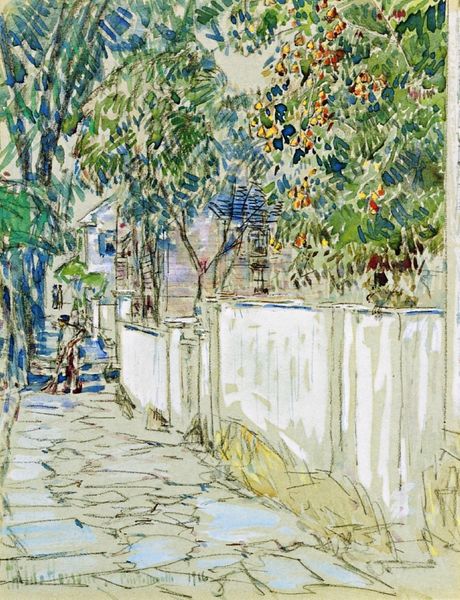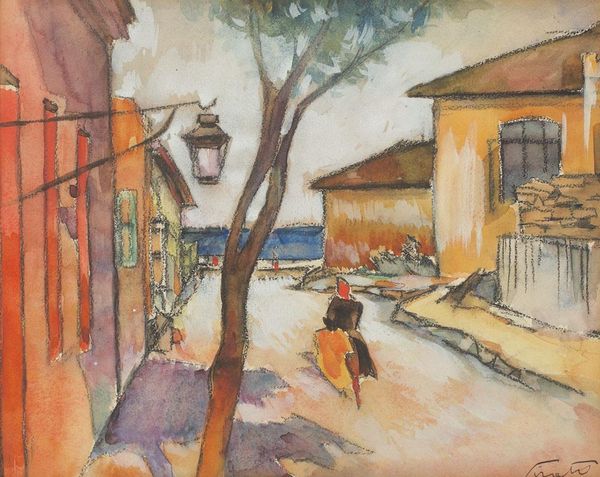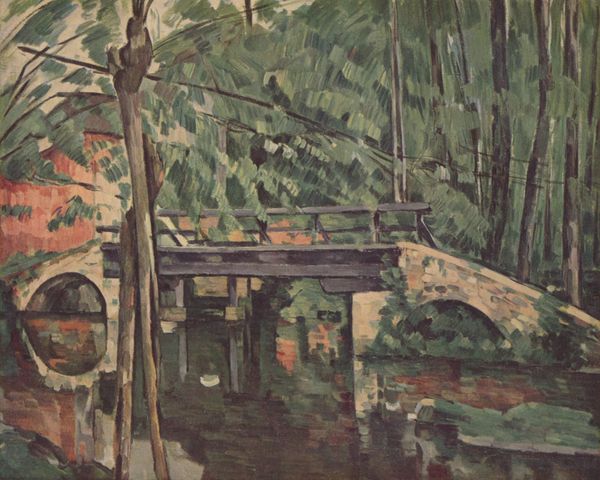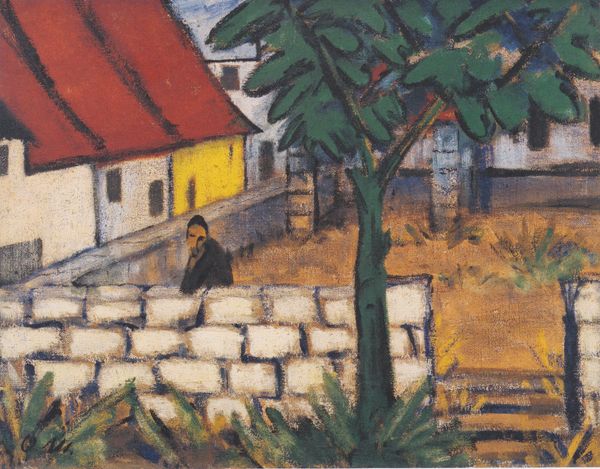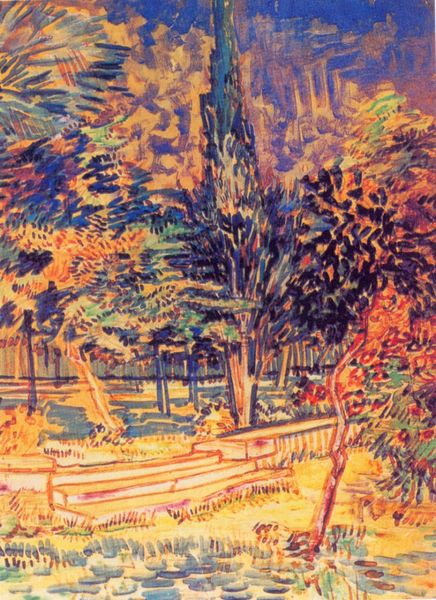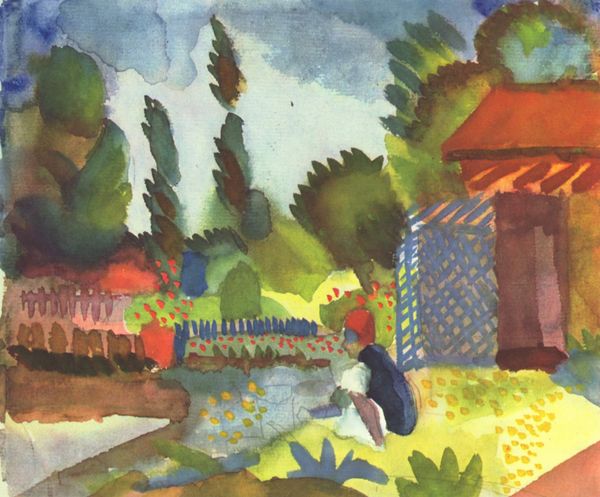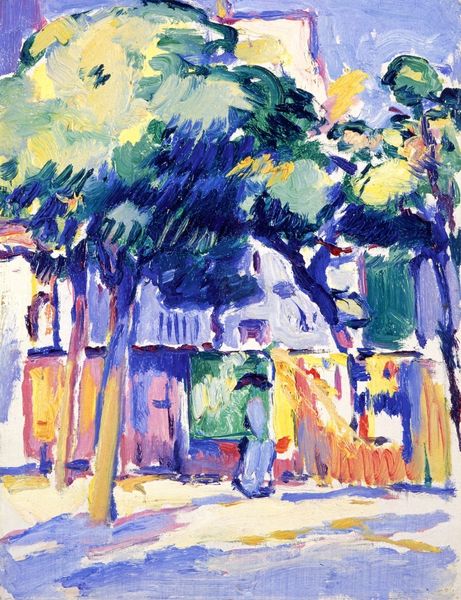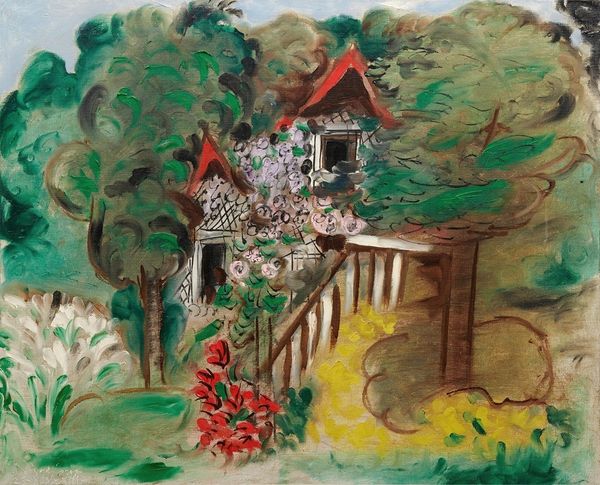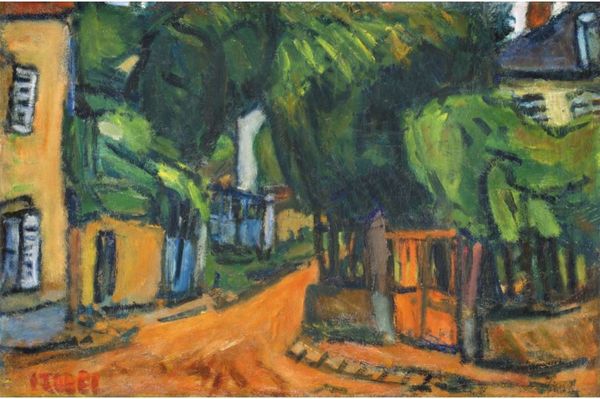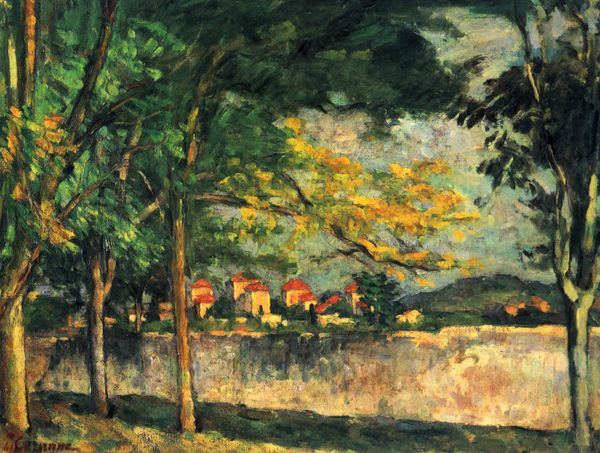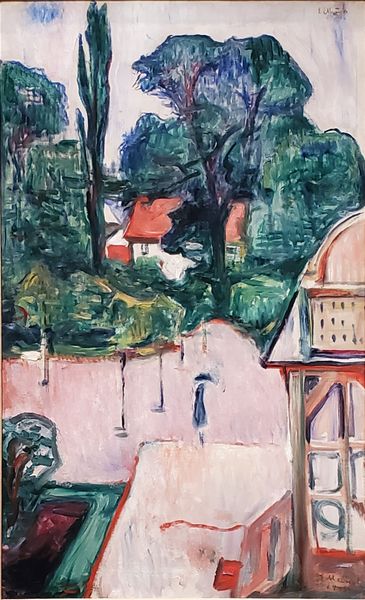
painting, watercolor
#
painting
#
impressionism
#
landscape
#
watercolor
#
cityscape
#
street
#
watercolor
Copyright: Public domain
Curator: At the Van Gogh Museum in Amsterdam, we find “Entrance to the Moulin de la Galette,” a watercolor from 1887 by Vincent van Gogh. Editor: It’s interesting… and somewhat vacant. I’m immediately drawn to the street—it almost looks unfinished with all that bare paper. There's a kind of melancholic sparseness to it. Curator: That's insightful. I see it less as vacant and more as suggestive, laden with visual symbolism related to absence. Van Gogh frequently explored spaces that were simultaneously inviting and isolating. Notice the gate leading into the Moulin area. Arches, passages, and entryways are often tied to emotional or spiritual transitions in his oeuvre. Editor: But consider how that 'gateway' is presented: loosely sketched and dissolving into the surrounding washes of color. It suggests that this Moulin, a place of leisure and festivity, is accessed via a route marked with transience and material uncertainty. Was this paper a choice related to availability? A quicker route to sales? The marks here aren't only artistic gestures but traces of his labor too. Curator: You make an important point about the material conditions shaping artistic creation. And I see that reflected in his symbolism here, yes. This scene becomes emblematic of the liminal spaces people occupy both physically and psychologically, perhaps embodying his own artistic struggle. He captures a transient moment, not in its joyous explosion, but in its quiet entrance. Editor: Absolutely. The paper becomes a key component, almost performing the role of ephemerality. Consider also the use of watercolor – quick-drying, relatively inexpensive. This is the stuff of everyday experience translated through readily available materials. I'm fascinated by this intersection between creative expression and raw material availability. Curator: A fitting perspective given that this location marks an interesting moment in Impressionist depictions of modernity and mass leisure culture; places which often become vehicles of personal experience through both material conditions and symbolic association. Editor: Indeed, thank you. I’ll carry that interpretation with me. Curator: As will I; thanks for sharing a unique point of view on this fascinating watercolor.
Comments
No comments
Be the first to comment and join the conversation on the ultimate creative platform.
